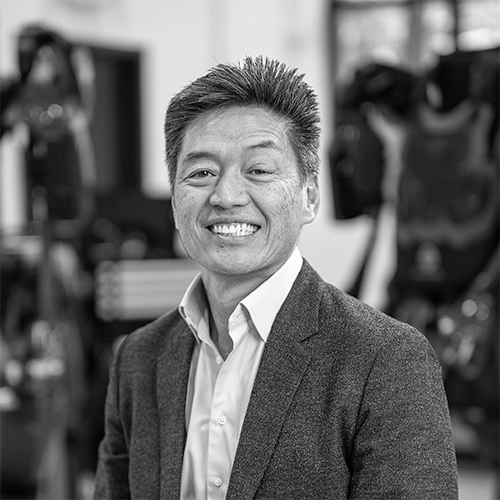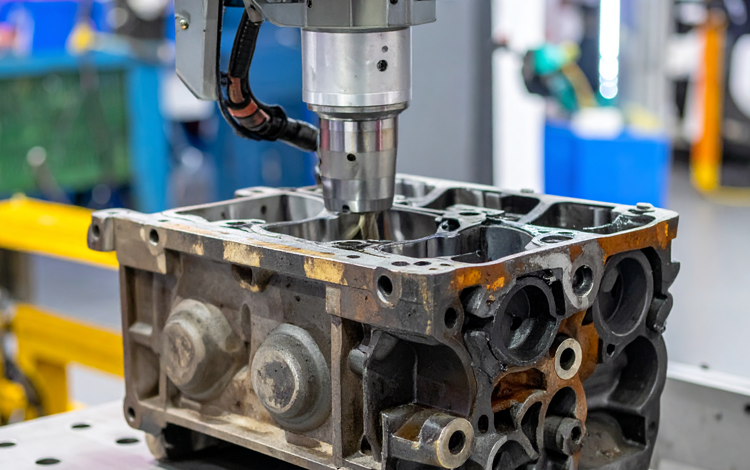Cleaning Up a Grimy Business with AI
Whether in electronics, automotive, aerospace, or industrial machinery, Maintenance, Repair, and Overhaul (MRO) and remanufacturing are booming businesses with significant environmental and economic benefits.
The global MRO industry in aviation alone will exceed $282 billion in 2025,[1] driven by commercial and military aviation sectors needing more engine maintenance, airframe services, and component repairs as the industry evolves.
Globally, remanufacturing is growing nearly 5% annually, and over 3,200 companies are driving innovation and expansion across the industry[2]. The sector employs over 250,000 workers worldwide, with 8,000 new employees added in 2024, reflecting steady workforce growth. [3]
The global automotive parts remanufacturing alone is projected to reach US$79.4 billion by 2030.[4] The entire remanufactured equipment market is expected to blossom and is projected to reach US$509 billion by 2034.[5]
Remanufactured parts are becoming an increasingly strategic choice among companies that want to achieve both cost efficiency and sustainable development. Remanufacturing can reduce waste, conserve resources, lower carbon footprints, and ensure reliable performance at a fraction of the cost of new units. Cost savings are also among the main drivers for adopting remanufactured equipment, as it can cost 30-50% less than buying new equipment.[6]
Refurbishing used equipment to its original specification requires many steps, including disassembly, cleaning, repairing, or replacing components, so the remanufactured products offer the same performance and reliability as new units. However, remanufacturers face unique challenges when returning an end-of-life product to its original quality and OEM spec, “like it’s new.”
Refurbishing’s Dirty Secret
Extending the value of high-value parts across multiple lifecycles comes with different difficulties, such as technical complexities and handling of materials, maintaining quality assurance in remanufactured products, and labor shortages. Remanufacturing also faces the “dirty jobs” aspect because it often involves handling used and potentially contaminated components and processes like disassembly and cleaning, which can be messy and require specialized handling.
Significant challenges hinder the automation of cleaning and detailing diverse components while ensuring consistent quality and efficiency in re-manufacturing.
- Cleaning process: Cleaning is essential for a visual inspection and determining whether the component is salvageable. It is also a crucial step in the final surface preparation before applying paint or coatings. While the cleaning workflow for components is a vital part of the re-manufacturing process, it’s also applicable across various industrial sectors, including general manufacturing and MRO.
- Automation difficulty: Remanufacturing is generally a low-volume, high-variety operation involving unique parts, making it challenging to automate current systems. Additionally, varying geometries and surfaces require different tools and cleaning methods.
- Hazardous and time-consuming: The cleaning job can be dirty, demanding, and sometimes hazardous. It may require using chemicals, aqueous washing, solvent cleaning, hydro-blasting equipment, and various cleaning brushes attached to pneumatic and electric drills for cleaning bolt holes and other crevices. Although human technicians can wear personal protective equipment (PPE), they may still be exposed to hazards such as chemicals, carbon deposits, rust, hydro-blasting equipment, and lifting heavy components.
- Labor shortage and training: Keeping a technician in this role can be challenging due to the dirty and dangerous nature of the job. As a result, the cleaning tasks often fall to entry-level technicians eager to move on to other positions as quickly as possible. This high turnover and low morale among workers in this role make it challenging to ensure the quality of work and provide the necessary training to maintain or expand operations.
Advanced technologies can significantly transform remanufacturing processes by automating disassembly, inspection, and quality control. They can also identify inefficiencies and areas for improvement, all while maintaining quality standards and promoting a more sustainable, circular economy.
Automation Answer
Implementing Palladyne IQ robotic AI software can help autonomously manage component cleaning, prepare surfaces for the next production stage, and enhance the overall production process across MRO, remanufacturing, and other industries. The software enables robotic systems to be more agile in remanufacturing by allowing them to adapt, adjust, and solve problems in real-time directly at the cleaning, detailing, and inspection stages.
At the heart of the Palladyne IQ software is an innovative approach known as “closed-loop autonomy.” This methodology enables machines to observe, learn, reason, and act with remarkable agility, similar to humans, allowing myriad tasks to be completed effectively. Additionally, it requires minimal task training time, utilizes smaller data sets, and has lower power requirements.
Enabling robots to perceive variations or changes in the real-world environment and teaching them to adapt to tasks dynamically, like cleaning a wide variety of components and parts, each with unique geometry and surface topographies, can now be autonomously addressed through robotics.
Palladyne IQ software can address variability in how a component is presented or oriented each time it ends up in front of the robot in the assembly line. Current solutions often require a component to be placed in the exact same location or orientation each time for a robot arm to engage with it as it was trained. With Palladyne IQ software, even if the same part is presented an inch or two away from the trained location or presented at a different angle or orientation, the AI software can still detect the component and where all the required cleaning areas are to get the job done.
When used on an Industrial or collaborative robot (cobot), Palladyne IQ software can autonomously carry out tasks involving multiple steps, cleaning tools, and various components. The AI-powered robots can identify the model of each component and implement necessary actions to address surface topographies.
Operators can create and train tasks using the Palladyne IQ chatbot interface. The robot then autonomously executes these tasks and adapts to changing circumstances. The robot can autonomously choose the appropriate cleaning tool based on surface characteristics, such as the diameter and depth of bolt holes. It then uses the selected tool to clear debris effectively.
The robot reasons like a human without the need for retraining or reprogramming.
Cleaner Benefits
With Palladyne IQ software, a remanufacturer can address high labor turnover and shortages associated with a dirty, dangerous, and demanding job, allowing them to focus on expanding their operations.
This autonomous solution addresses the challenges of a shrinking labor market and minimizes downtime. Additionally, its ability to quickly adapt to new component models makes adjusting to changing products and customer demands easier and faster.
Palladyne IQ software enables robots to efficiently scan and analyze products using advanced object detection and edge-based AI/ML technology. This allows the robots to adapt to variations in components during the cleaning and detailing process, ensuring consistent quality. The software features easy, low-code/no-code retraining, which allows robots to perform new tasks with minimal downtime and quickly adapt to changing components. As a result, cleaning and inspection volumes can scale to meet customer demands.
The process minimizes manual labor, enhances safety, reduces cleaning time, and improves throughput for better re-manufacturing outcomes.
In addition, the Palladyne IQ software can help remanufacturers with key cost benefits:
- Save time and improve return on investment (ROI) by increasing yields and reducing human errors.
- Effectively manage labor shortages and scheduling challenges.
- Ensure accurate and consistent product quality while maintaining timely and efficient production.
- Minimize waste on production lines by detecting product defects early and addressing issues before they become costly and time-consuming.
Companies in aerospace, automotive, heavy equipment manufacturing, and metal products manufacturing that focus on MRO and remanufacturing should look into incorporating automation at different stages of assembly to keep up with the growing demand. By adopting proactive quality management strategies and utilizing automation solutions such as Palladyne IQ robotic AI software, they can effectively identify and guarantee that their products are refurbished to the highest standards. This approach not only keeps workers clean and safe but also helps remanufacturers secure a competitive advantage in the long term.
This blog contains forward-looking statements within the meaning of the Private Securities Litigation Reform Act of 1995, including, but not limited to, statements regarding the capabilities or future capabilities of Palladyne AI’s foundational technology and products and the industries that could benefit from them. Generally, statements that are not historical facts, including statements concerning possible or assumed future actions, business strategies, events, or results of operations, are forward-looking statements. These statements may be preceded by, followed by, or include the words “believes,” “estimates,” “expects,” “projects,” “forecasts,” “may,” “will,” “should,” “seeks,” “plans,” “scheduled,” “anticipates,” “intends” or “continue” or similar expressions. Such forward-looking statements involve risks and uncertainties that may cause actual events, results, or performance to differ materially from those indicated by such statements. Palladyne AI assumes no obligation to update such statements. For a discussion of these and other related risks, please refer to the statements set forth in the reports which Palladyne AI has filed or will file from time to time with the Securities and Exchange Commission. Such filings may be obtained free of charge at www.sec.gov.
- [1] Aviation Week’s 2025 global forecast
- [2] Remanufacturing Market Report 2025: Key Data & Innovation Insights, StartUs Insights
- [3] IBID
- [4] Aging Vehicle Fleet Drives Opportunities for Remanufactured Parts in the Aftermarket, Automotive Parts Remanufacturing Industry Trends, 2025-2030
- [5] Fact.MR Report
- [6] IBID



